Exploring Gluten-Free Tart Shells: A Culinary Guide
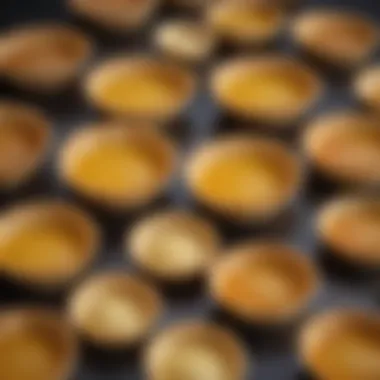
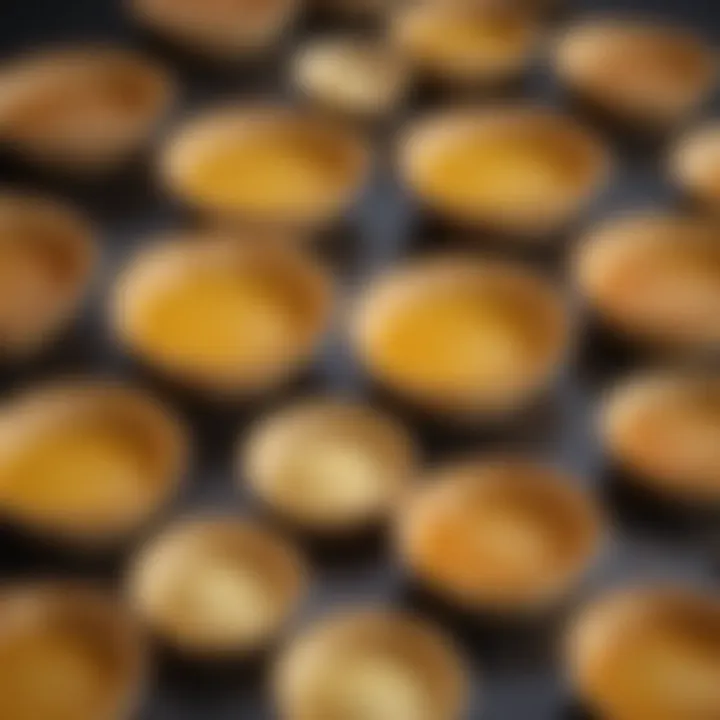
Intro
The rise in popularity of gluten-free diets has led many culinary enthusiasts to explore alternative baking methods. While traditional tart shells rely heavily on wheat flour, the gluten-free counterparts present a different yet intriguing set of challenges and possibilities. This exploration focuses on gluten-free tart shells, emphasizing their significance in modern baking and the creative potential they hold for both novice and experienced bakers.
Adopting gluten-free ingredients does not merely mean substituting one flour for another; it often involves understanding how different components interact. The steps involved in creating these shells can enhance one's culinary skills while catering to a growing audience that appreciates gluten-free options. As we navigate through the essential elements of these unique tart shells, the following sections will present insights into the recipe overview, ingredient selection, preparation techniques, and variations suitable for diverse diets.
This piece aims to provide a comprehensive guide that not only serves seasoned bakers but also invites those unfamiliar with gluten-free cooking to engage with the process and enjoy its outcomes.
Prelims to Gluten-Free Tart Shells
Understanding gluten-free tart shells is pivotal in the broader context of gluten-free baking. Many individuals have dietary restrictions or conditions that necessitate the avoidance of gluten, a protein found in wheat and other grains. For these individuals, tart shells often present a challenge. However, with a suitable understanding of ingredients and techniques, gluten-free versions can be crafted that not only comply with dietary needs but also maintain the comforting textures and flavors that tarts are known for.
The significance of gluten-free tart shells extends beyond mere recipes. They cater to an increasing demographic seeking harmonious dining experiences without the discomfort associated with gluten. These shells can serve as a versatile base for sweet or savory dishes. Utilizing alternative flours and binding agents enables bakers to engage in creative culinary expression.
Furthermore, this journey into gluten-free tart shells offers a blend of tradition and innovation. While many recipes hark back to tried-and-true methods, others push the envelope by experimenting with various textures and tastes.
Understanding Gluten-Free Baking
Gluten-free baking poses its own unique challenges. When gluten is removed from recipes, bakers must consider the implications for structure and moisture. Traditional baking relies heavily on gluten for elasticity and strength. In its absence, alternate approaches must be adopted.
Bakers often employ a mixture of gluten-free flours to mimic the properties of wheat flour. For instance, almond flour adds moisture while brown rice flour provides structure. Utilizing better textures often means incorporating a binding agent, enabling the dough to hold together.
Trials and adaptation are essential components of gluten-free baking. Success may not always be immediate and can require experimentation with ingredient ratios. However, many bakers find that the resulting flavors and textures can exceed even their own expectations.
The Rise of Gluten-Free Cuisine
The increase in awareness regarding gluten intolerance and celiac disease has made gluten-free cuisine more mainstream. Food establishments world wide have begun to include gluten-free options, acknowledging the demand from health-conscious consumers. This shift reflects an understanding that food should be both nourishing and enjoyable, regardless of dietary needs.
As a result, creativity in gluten-free recipes has surged. The culinary landscape now features innovative alternatives that appeal to all diners, not just those with gluten sensitivities. Ever more chefs are crafting recipes that highlight gluten-free ingredients while still aligning with flavor profiles seen in traditional cooking.
This upswing also includes the advent of cookbooks, blogs, and online forums dedicated exclusively to gluten-free baking. Resources such as Reddit and Facebook groups have emerged, fostering a community for shared experiences and tips. Whether for health reasons or personal preference, the rise of gluten-free cuisine is set to continue, promising exciting culinary adventures and innovations.
Essential Ingredients for Gluten-Free Tart Shells
In the realm of gluten-free baking, the choice of ingredients plays a pivotal role in achieving the desired texture and flavor of tart shells. Understanding these essential components can greatly influence the final results. Various gluten-free flours, binding agents, and fats can lead to different outcomes. Each ingredient brings its unique properties that can enhance or compromise the quality of the tart shell.
Gluten-Free Flours
Almond Flour
Almond flour is popular in gluten-free baking for its fine texture and rich taste. It is made from ground almonds, making it a nutrient-dense option. One of its key characteristics is its moisture-retaining ability. This results in a softer tart shell that is less likely to become dry. Almond flour also contributes healthy fats and protein, promoting satiety.
While it is a favored choice, almond flour can be dense. Therefore, it is often combined with lighter flours to balance its weight. Additionally, some may have nut allergies, which makes it less suitable for all dietary needs. However, its nutritional profile and flavor make it a strong candidate in gluten-free tart recipes.
Coconut Flour
Coconut flour is another common ingredient in gluten-free tart shells. It is extremely absorbent and requires adjustments to liquid ratios in recipes. Coconut flour is rich in fiber, making it beneficial for digestive health. Its distinct taste can add a subtly sweet flavor to the tart shell, enhancing dessert recipes.
However, the absorbent nature of coconut flour can be a challenge. Too much can lead to a dry texture. Thus, it is wise to blend it with other flours or use it in smaller proportions. Overall, coconut flour serves as a nutritious and flavorful option for gluten-free baking.
Brown Rice Flour
Brown rice flour is one of the most versatile gluten-free flours. It has a neutral flavor and is relatively easy to work with. This flour has a good balance of starch and protein, which aids in creating a reasonable texture in tart shells. Its compatibility with other flours means it can serve as a base in many recipes, allowing for a variety of custom blends.
Yet, brown rice flour can sometimes yield a gritty texture, particularly if not finely milled. A common practice is to combine it with gluten-free starches like tapioca. This blend helps achieve a smoother consistency in baked goods. Therefore, while brown rice flour is a valuable ingredient, careful selection and combination with other components are crucial.
Binding Agents
Xanthan Gum
Xanthan gum is a staple binding agent in gluten-free baking. It mimics the elasticity and structure that gluten provides in traditional recipes. Xanthan gum helps to stabilize reactions during baking, preventing crumbling and ensuring a cohesive texture. Its effectiveness in small amounts makes it economical for various gluten-free recipes.
However, overusing xanthan gum can lead to a gummy texture. It is essential to adhere to guidelines regarding its usage to avoid adverse effects on the final product. In summary, xanthan gum is valuable for achieving a satisfactory texture in gluten-free tart shells.
Guar Gum
Guar gum functions similarly to xanthan gum, providing structure and stability. Made from guar beans, it has a thickening quality that can contribute to moisture retention. This can be particularly useful in recipes needing a soft, pliable crust. Guar gum is typically more economical than xanthan gum, making it a favored choice for many bakers.
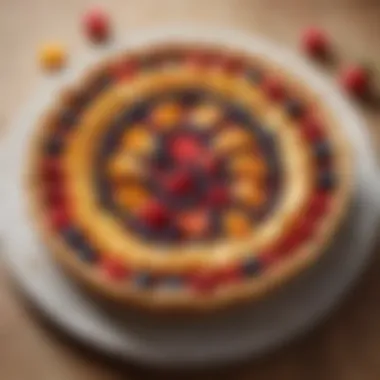
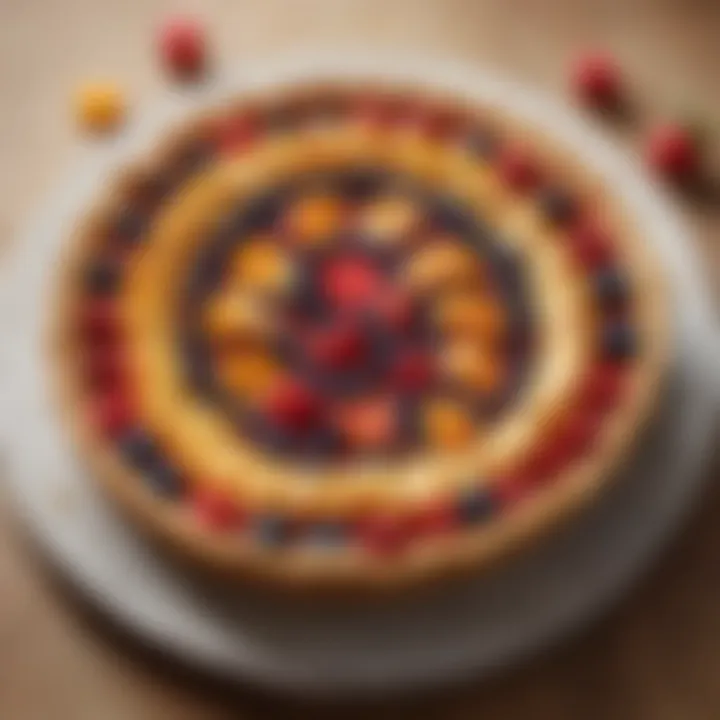
Like xanthan gum, moderation is crucial. Using too much can create an overly thick texture, which may be less desirable in tart shells. Nonetheless, guar gum is beneficial for enhancing the overall quality of gluten-free desserts.
Psyllium Husk
Psyllium husk is gaining traction as a binding agent in gluten-free baking. It absorbs water and expands, which helps to mimic the elasticity usually provided by gluten. It is also high in soluble fiber, offering additional health benefits. By incorporating psyllium husk into tart shell recipes, bakers can achieve a light, airy texture that holds together well.
However, achieving the right balance can be tricky. If too much is added, the texture can become dense. Therefore, careful measurement and experimentation are key to successfully using psyllium husk in gluten-free baking.
Fats and Oils
Butter
Butter is a widely used fat in traditional baking, and it continues to have a strong presence in gluten-free tart shells. Its rich flavor and ability to create a flaky texture are unmatched. The melting point of butter allows for high-quality crusts as it browns beautifully during baking. Butter also adds moisture, contributing to the tart shell's mouthfeel.
On the other hand, some individuals may seek dairy-free options. In such cases, substitutions are necessary. Nevertheless, for those who can consume butter, it remains a prime choice for its flavor and texture.
Coconut Oil
Coconut oil is a versatile substitute for butter in gluten-free recipes. Its solid state at room temperature enables it to provide a flaky texture similar to butter, while also imparting a distinct coconut taste. This oil is a suitable option for those avoiding dairy, making it popular among vegan bakers.
However, coconut oil has a lower melting point. This can necessitate adjustments in baking times and temperatures. Additionally, its strong flavor may not be desirable in all recipes. Still, coconut oil serves as an excellent alternative in many gluten-free tart recipes.
Vegetable Shortening
Vegetable shortening is another option for fats in gluten-free tart shells. It is flavorless, which allows the primary tastes of the fillings to shine. Using shortening can yield a very tender and flaky crust, making it favorable for many bakers. Since it is solid at room temperature, it incorporates easily into doughs.
Yet, some might raise health concerns over the use of hydrogenated oils in shortening. It is important to consider the quality of the product used. When selected wisely, vegetable shortening can enhance the texture of gluten-free tart shells effectively.
Understanding these essential ingredients not only enhances baking outcomes but also empowers bakers to customize their gluten-free tart shells according to their taste preferences and dietary restrictions.
Methodology for Preparing Gluten-Free Tart Shells
The methodology of preparing gluten-free tart shells is crucial for achieving desirable results, especially for those with specific dietary needs. Understanding the preparation process not only aids in creating a delicious tart but also helps in maneuvering around common pitfalls associated with gluten-free baking. This section encompasses various techniques and best practices that one must consider to ensure optimal texture and flavor.
Basic Preparation Steps
The preparation steps for gluten-free tart shells are straightforward yet necessitate precision. Here are the essential steps to follow:
- Gather Ingredients: Ensure you have all necessary ingredients. This includes the selected gluten-free flour, binding agents, fats, and any additional flavorings.
- Mix Dry Ingredients: In a large bowl, combine the gluten-free flour with the binding agents. This ensures even distribution and contributes to the overall texture of the shell.
- Incorporate Fats: Add the chosen fat, such as butter or coconut oil. Use your fingers or a pastry cutter to combine until the mixture resembles coarse crumbs.
- Add Liquids: Gradually add cold water or other liquids. Mix until the dough holds together but avoid overworking it.
- Chill the Dough: Wrap the dough in plastic wrap and refrigerate for at least 30 minutes. This step is vital for firming up the fats, making it easier to roll out.
- Roll Out Dough: On a lightly floured surface (with more gluten-free flour), roll out the dough to fit your tart pan.
- Transfer to Tart Pan: Carefully transfer the rolled dough to the tart pan, pressing it gently into the corners.
- Trim Excess Dough: Cut off any excess from the edges of the pan, making sure to leave a slight overhang to account for shrinkage during baking.
- Pre-Bake if Necessary: Depending on the recipe, you may need to blind bake the tart shell before adding your fillings.
This systematic approach ensures that each step builds upon the last, resulting in a properly constructed tart shell ready for filling.
Blind Baking Technique
Blind baking is an essential method used in preparing tart shells, especially for recipes where the filling does not require extensive cooking. This technique helps achieve a crisp crust by preventing the dough from becoming soggy when filled. Here is how to execute the blind baking process:
- Preheat Oven: Start by preheating your oven to the required temperature, usually around 350°F (175°C).
- Prepare the Shell: Follow the basic preparation steps outlined previously.
- Line with Parchment Paper: Once the tart shell is assembled in the pan, place a sheet of parchment paper over the dough.
- Add Weights: Fill the lined tart shell with pie weights or dried beans. This prevents the dough from puffing up during cooking.
- Bake: Place the tart shell in the preheated oven and bake for about 15–20 minutes, or until the edges start to brown.
- Remove Weights: Carefully take the tart shell out, remove the parchment paper along with the weights, and then return to the oven for an additional 5–10 minutes to finish baking and achieve a golden color.
Blind baking is key for maintaining the integrity of the tart shell.
By applying these methodologies, one can greatly enhance the quality of gluten-free tart shells. Mastery of these techniques will open a variety of culinary avenues for those intrigued by gluten-free baking.
Common Challenges in Gluten-Free Baking
In the realm of gluten-free baking, particular challenges emerge that can affect both the outcome of baked goods and the experience of the baker. These challenges are essential to understand for anyone looking to create gluten-free tart shells that rival traditional versions. This section highlights common issues related to texture, consistency, and flavor.
Texture and Consistency Issues
One primary challenge in gluten-free baking is achieving the right texture. Gluten, a protein found in wheat, provides structure and elasticity, enabling baked goods to maintain their shape. In gluten-free tart shells, the absence of gluten often results in a crumbly or too dry product. The texture can feel significantly different from traditional tart shells, which may lead to disappointment.
To counter these texture issues, specific binding agents and flours must be carefully chosen and combined. Ingredients like xanthan gum, guar gum, or psyllium husk can help mimic gluten's properties, offering some structure and elasticity. The success of a tart shell may hinge on the ratios of these ingredients.
Cooking techniques also play a major role. Taking care to blend the ingredients properly and ensuring adequate hydration levels can improve the final product. A balance must be found between dry and wet ingredients to facilitate a consistent texture.
Flavor Considerations
Flavor is another critical aspect that cannot be overlooked when creating gluten-free tart shells. Many gluten-free flours, like almond flour or coconut flour, possess distinct tastes that may not always complement the intended tart filling or recipe context. This variation in flavor can lead to a less harmonious dish if not approached thoughtfully.
To enhance flavor, consider blending different free-from flours to achieve a more balanced profile. For instance, pairing almond flour with a bit of brown rice flour can create a complex taste that supports sweet or savory fillings alike. It is also vital to account for additional flavor enhancers. Utilizing higher-quality fats, such as butter or coconut oil, contributes to a richer taste. Moreover, including a pinch of salt can bring out the underlying flavors of the ingredients used.
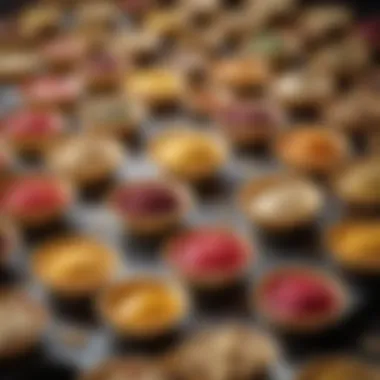

"Understanding and addressing these challenges can significantly elevate the gluten-free baking experience, leading to a more satisfying result."
Addressing texture and flavor issues is crucial for achieving successful gluten-free tart shells. With a careful approach to ingredients and techniques, the challenges presented can transform into opportunities for culinary creativity.
Creative Variations of Gluten-Free Tart Shells
The world of gluten-free tart shells is not just limited to standard recipes. Exploring creative variations enriches culinary experiences and caters to diverse dietary needs. These variations provide flexibility and allow for unique flavors and textures. By experimenting with different ingredients, bakers can create tart shells that not only accommodate gluten-free diets but also stand out in taste and presentation. Each variation presents its own set of benefits, such as enhanced nutritional value or appealing flavors that attract various palates.
Nut-Based Tart Shells
Nut-based tart shells are an excellent choice for those seeking both flavor and health benefits. The use of nuts, such as almonds or walnuts, elevates the nutritional profile of the tart shell, providing essential fatty acids, protein, and fiber. Almond flour is a popular option for these crusts because it offers a subtly sweet taste and a wonderful texture.
When making nut-based tart shells, it is crucial to balance moisture and fat content. The natural oils in the nuts help bind the ingredients together, eliminating the need for gluten. A basic recipe might involve simply combining almond flour, a bit of salt, and melted coconut oil until it resembles a dough. Pressing this mixture into a tart pan results in a firm, versatile shell that can be filled with various sweet or savory fillings.
Coconut Flour Tart Shells
Coconut flour is another fantastic ingredient for gluten-free tart shells. It is high in fiber and low in carbohydrates, making it favorable for many dietary preferences. However, coconut flour is highly absorbent, so it requires significantly more liquid compared to other flours. A typical recipe will involve coconut flour, eggs, and a fat, such as butter or palm oil. This combination yields a crust that is slightly sweet and has a unique flavor profile.
Bakers often enjoy the lightness and crumbly texture of coconut flour tart shells. For those who like tropical flavors, these shells can be paired with fruit fillings to create visually appealing and delicious desserts. Experimenting with spices like cinnamon or nutmeg can enhance the flavor even more.
Savory Tart Shells
Savory tart shells offer endless possibilities for creativity in gluten-free cooking. These shells can be made using a variety of ingredients, from vegetable purees to cheese, to create delightful bases for quiches or tarts. A common approach is using a combination of gluten-free flours such as brown rice flour and a binding agent like psyllium husk to achieve a robust and flavorful shell.
In many recipes, the addition of herbs or spices can further enrich the flavor. For example, incorporating fresh herbs such as rosemary or thyme can elevate a simple tart shell into a gourmet foundation for savory fillings. These shells can hold a variety of fillings, from creamy cheese mixtures to roasted vegetables, catering to both vegetarian and non-vegetarian dishes.
Exploring creative variations in gluten-free tart shells opens the door to culinary innovation and personalized dietary choices.
Tips for Perfecting Gluten-Free Tart Shells
Creating the perfect gluten-free tart shell is both an art and a science. There are various key elements to consider that can significantly affect the final texture and flavor of the tart shell. Paying attention to temperature and storage techniques can ensure that your tart shells are not only functional but also delectable.
A well-crafted gluten-free tart shell requires precise measurements and techniques to avoid issues like cracking or overly crumbly textures. The following tips explore using the right temperature during preparation and proper storage techniques, both of which play a significant role in ensuring your tart shells meet your culinary expectations.
Using the Right Temperature
Temperature is crucial in gluten-free baking, especially when preparing tart shells. When working with fats such as butter or coconut oil, it is important to ensure these ingredients are at the appropriate temperature. This helps achieve the right texture and consistency for your shell. Here are some key points:
- Chilling the Dough: Before rolling out your dough, refrigerate it for at least 30 minutes. This helps firm up the fats, making it easier to handle. Cold dough also helps prevent shrinkage during baking.
- Correct Baking Temperature: Preheat your oven to the right temperature. Usually, the ideal range for gluten-free tart shells is between 350°F to 375°F. An oven that is not preheated may lead to uneven baking, resulting in a potential collapse.
- Monitor Baking Time: Keep an eye on the crust while baking. Gluten-free tart shells can brown quickly, so it’s advisable to check them a few minutes before the recommended time to avoid overbaking.
Maintaining the correct temperature throughout the preparation and baking process ultimately influences not only taste but also the texture of the tart shell. This step should not be neglected in any gluten-free baking endeavor.
Proper Storage Techniques
Proper storage can extend the life and quality of your gluten-free tart shells. Knowing how to store them correctly can prevent them from becoming stale or losing their texture. Consider these techniques:
- Short-Term Storage: If you plan to use the tart shells within a few days, store them at room temperature in an airtight container. This setting will help maintain their crispness.
- Long-Term Storage: For longer storage, freezing is an excellent option. Make sure the fully baked tart shells are completely cooled. Wrap them tightly in plastic wrap and then place them in a freezer-safe bag. They can last for up to two months this way.
- Thawing: When you are ready to use frozen tart shells, allow them to thaw at room temperature. Avoid reheating in the microwave as this can make them soggy. Instead, warm them in a conventional oven briefly to restore some of their initial crispiness.
Effective storage not only boosts the lifespan of gluten-free tart shells but also plays a role in maintaining their desired texture and taste.
By incorporating these tips into your baking routine, you can significantly enhance your experience with gluten-free tart shells. Ultimately, attention to detail in temperature and storage will yield a product that satisfies a variety of palates.
Recipes to Try with Gluten-Free Tart Shells
Exploring recipes for gluten-free tart shells offers an insight into versatile and creative culinary possibilities. Each recipe not only highlights how to utilize the unique properties of gluten-free ingredients but also showcases the adaptability and flavor that can come from these alternatives.
Choosing the right recipe can elevate one's understanding of gluten-free baking. The classic fruit tart, for instance, appeals to those seeking a refreshing dessert, while the rich chocolate ganache tart caters to chocolate lovers. Finally, a savory quiche can introduce nutritional vegetables to the mix, providing a delightful meal option. These diverse recipes ensure that gluten-free tart shells can be enjoyed by various palates.
Classic Fruit Tart
This recipe features the vibrant colors and flavors of seasonal fruits like strawberries, blueberries, or kiwi atop a creamy filling. The combination of a crisp gluten-free tart shell and fresh fruit creates a visual feast and a delightful contrast of textures.
To prepare:
- Crust: Focus on using a blend of almond flour and coconut flour for the crust. This mix yields a nutty flavor and a tender texture.
- Filling: Consider a custard or pastry cream based on coconut milk for a dairy-free option. Vanilla extract can enhance flavor.
- Topping: Arrange your chosen fruits artistically over the filling before serving.
Sum up your creation with a light dusting of powdered sugar to add a touch of elegance.
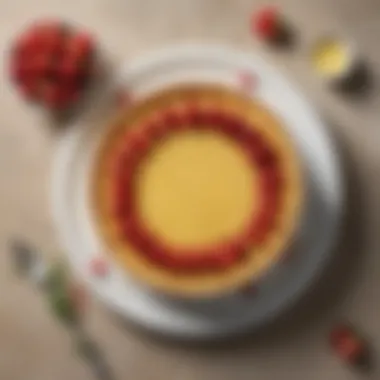
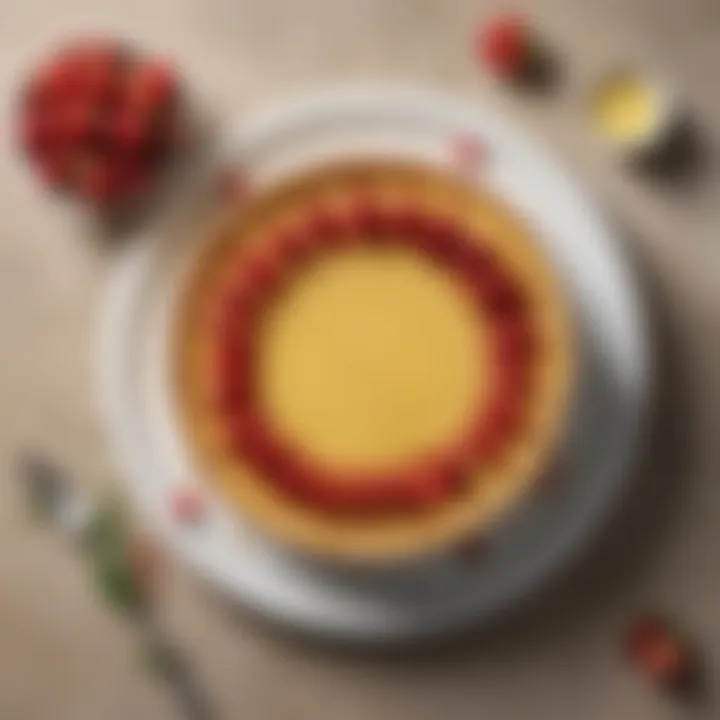
Chocolate Ganache Tart
Indulging in chocolate is universal, and this tart brings that essence forward. The silky chocolate ganache fills the gluten-free tart shell, creating a rich dessert that's perfect for special occasions or simply a treat after dinner.
To achieve success in this tart:
- Crust: Opt for a base made with ground gluten-free cookies or nut flour to achieve a crunchiness that complements the ganache.
- Ganache: Melt dark chocolate and mix it with coconut cream for an added depth and richness. Let it cool for a smooth finish.
- Finishing Touch: Top with sea salt or chocolate shavings for added contrast and flavor that will excite the taste buds.
Savory Quiche with Seasonal Vegetables
This quiche serves as a hearty meal option, balancing flavors and nutrition. By using seasonal vegetables such as spinach, bell peppers, or mushrooms, one can create a dish that's not only filling but also colorful.
For this savory tart:
- Crust: Use a mix of brown rice flour and tapioca starch for a pliable and flaky texture.
- Filling: Whisk together eggs, some almond milk, and your choice of spices for a flavorful custard. Add in sautéed seasonal vegetables and cheese if desired.
- Baking: Ensure the quiche is baked until the filling is set and the crust is golden brown.
These recipes exemplify the flexibility and enjoyment of gluten-free tart shells. They allow cooks to experiment in the kitchen and provide satisfying options for varying dietary needs.
Cooking gluten-free does not mean sacrificing flavor or creativity. Each recipe here reflects the truth that gluten-free baking has its own distinct advantages.
Nutritional Aspects of Gluten-Free Tart Shells
Understanding the nutritional aspects of gluten-free tart shells is essential in grasping their role in modern baking and health-conscious diets. These tarts offer an alternative for those with gluten sensitivities or celiac disease, ensuring that dietary restrictions do not limit enjoyment or flavor. The focus on ingredients and their nutritional profiles shapes the discussion surrounding gluten-free baking.
Comparative Nutritional Value
Comparing the nutritional value of gluten-free tart shells to their traditional counterparts reveals noteworthy differences. Traditional tart shells often contain wheat flour, which is rich in gluten but may not align with the needs of everyone. Gluten-free flours, such as almond and coconut flour, offer unique profiles. Almond flour is high in healthy fats, vitamins, and minerals, while coconut flour is usually high in fiber. This fiber content aids digestion, making gluten-free tart shells potentially more favorable for gut health.
While fat content can vary, those using coconut oil or butter might find their shells higher in saturated fats. It is crucial to balance these higher fat quantities with other healthful ingredients. Additionally, gluten-free options often use lower glycemic index ingredients, which helps in managing blood sugar levels. Evaluating these different nutritional components is beneficial for individuals seeking a dietary framework that supports their health goals.
Health Benefits and Considerations
There are significant health benefits associated with consuming gluten-free tart shells. For individuals with celiac disease or gluten intolerance, avoiding gluten is vital to prevent adverse physical reactions, which can include bloating and abdominal pain. Gluten-free baking provides an avenue for those affected to enjoy pastries without compromising their health.
Furthermore, gluten-free baking encourages the use of alternative ingredients that often carry added nutritional benefits. For example, the incorporation of seeds or nut flours adds protein and essential fats, contributing to a more satisfying and nutritious diet. However, one must be mindful of potential allergens, such as nuts used in the crust. Recipes should clearly indicate these ingredients to avoid allergy-related issues.
Moreover, gluten-free pre-made options often contain additives to mimic the texture and taste of conventional products. This might not always align with the health goals of all. Therefore, a preference for homemade gluten-free tart shells can enable more control over ingredients and their nutritional value.
The choice of ingredients plays a significant role in the nutritional aspects of gluten-free tart shells, impacting digestion, energy levels, and overall health.
In summary, gluten-free tart shells can be a nutritious addition to the diet for many. By understanding the nutritional value and being vigilant about ingredients, consumers can enjoy the pleasures of baking while adhering to their health requirements. There is a fine balance in maximizing health benefits while ensuring that flavors and textures remain appealing.
Gluten-Free Tart Shells in Culinary Trends
The rise of gluten-free diets has led to substantial changes within the culinary landscape. Gluten-free tart shells reflect this trend by catering to an audience that seeks both alternative dietary options and mouth-watering culinary experiences. Understanding their role in modern cooking is essential. They represent not just a dietary accommodation but also a shift in culinary practices, blending creativity with health consciousness.
Popularity in Modern Cuisine
The increasing interest in gluten-free eating has led to an uptick in gluten-free tart shells’ popularity in many culinary applications. Chefs and home bakers alike recognize their versatility, allowing for the creation of both sweet and savory dishes.
- Health Consciousness: As more consumers become aware of gluten-related disorders, such as celiac disease and gluten sensitivity, the demand for gluten-free options has soared.
- Culinary Creativity: Gluten-free tart shells open up a canvas for experimentation. Flour alternatives like almond flour or coconut flour not only cater to gluten-free diets but also add unique flavors and textures.
- Social Trends: The prominence of food blogs and social media platforms has also contributed. More people are sharing gluten-free recipes and experiences online, encouraging wider adoption.
The infusion of gluten-free options into mainstream cuisine indicates that taste and dietary needs can coexist effectively.
Impact on Traditional Baking
The advent of gluten-free tart shells has disrupted traditional baking methods significantly. Classic baking techniques, often reliant on all-purpose flour, have evolved to accommodate alternative ingredients. Understanding this impact is vital.
- Recipe Adjustments: Traditional recipes must be adapted to include gluten-free flours and binding agents, often leading to new techniques in mixtures and measurements.
- Texture Alteration: The absence of gluten, which provides structure in classic baking, necessitates a focus on texture. Bakers must explore blending various flours and additives to achieve satisfactory results.
- Bridging Cultures: The shift has also inspired the fusion of different culinary traditions. Recipes from various cuisines may incorporate gluten-free tart shells, expanding their global influence.
The transformation seen in baking highlights a willingness to embrace change, reflecting the evolving dietary needs of society.
Ending
The exploration of gluten-free tart shells reveals not only the culinary potential of alternative baking but also addresses the necessity of accommodating various dietary preferences. Understanding how to prepare these delicacies fosters inclusivity in culinary practices, recognizing that many individuals require gluten-free options due to health issues, such as celiac disease or gluten sensitivity.
By delving into the essential ingredients, we see the importance of selecting the right gluten-free flours, binding agents, and fats. These components significantly influence the texture and flavor of the tart shells. Each ingredient serves a purpose that contributes to the overall success of the recipe.
When it comes to method, the technique of blind baking stands out. It is crucial for achieving a crispy crust that holds together well, regardless of filling. This step emphasizes the balance between careful preparation and creative expression in gluten-free baking.
Moreover, the article does not shy away from discussing challenges such as texture and flavor. It encourages bakers to experiment and adapt, emphasizing that the journey to mastering gluten-free tart shells is about exploration and learning. Finding the right balance can be a revelation, allowing bakers to satisfy the palates of both gluten-sensitive and gluten-tolerant individuals alike.
In terms of nutritional aspects, the comparative analysis offers insights into how gluten-free options can fit into a balanced diet, dispelling myths surrounding gluten-free eating. With knowledge of the health benefits combined with practical recipes, food lovers are inspired to incorporate these tarts into their daily lives, appreciating their versatility.
Ultimately, this article serves as a comprehensive guide, encouraging a deeper understanding of gluten-free culinary arts. It empowers both novice and experienced bakers to innovate, experiment, and enjoy the process of creating gluten-free tart shells. These insights not only enhance personal cooking endeavors but also contribute to the broader movement of embracing diverse dietary customs in today's world.







